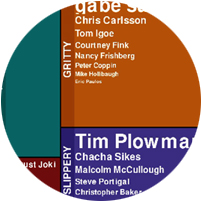
AnyPhone
Designing mobile phone applications
for any phone
AnyPhone Paper published at ACM DUX 2007
The mobile phone is one of the most commonly carried pieces of personal, readily accessible digital technologies. Beyond just voice calls, they function as digital cameras, PDAs, internet consoles, and email and instant messaging clients. The demand for improved operating systems and programming languages has given rise to a wide range of hardware and programming APIs. However, the designers of these mobile phone applications are continuously challenged with two inescapable aggravations: (1) how will users locate and download the application to their mobile phone and (2) will the application be compatible with their phone’s hardware? We undertook the challenge to discover the design space of mobile phone applications that required no downloading or installation procedure and would operate on any mobile phone regardless of the phone’s network, carrier, operating system, age, or hardware.
Symbian? J2ME? Windows Mobile? PalmSource? BREW? FlashLite? Python? These are just the start of a long list of design questions one undertakes at the onset of the development of a mobile phone application. The decision of the programming language and underlying operating system inevitably restrict the platform compatibility of the resulting application.
The value of new hardware features and software advances is undeniable as they enable new capabilities, improve performance, and generate the novel mobile experiences we crave. Can we illuminate new design territory by undertaking a design exercise of mobile phone interactive experiences that will operate on any phone without any download, setup, or installation? The challenge seemed extreme, perhaps insurmountable, given the current state of the mobile phone software market. However, the rewards of easy, instantly usable interactive mobile experiences by anyone with any mobile phone were tantalizing and may provide insignts into new mobile device usage models.
It meant the solution would need to be usable on phones without bluetooth, without GPRS, without color screens, without a screen at all in fact as it needed to operate on literally every mobile phone – including those few still in use from the early 1990’s. In fact the only commonality across these systems was the fact that they had a dial tone, could dial a number, and generate voice and DTMF audio signals. Using a public display and Asterisk, an open source PBX exchange, we designed and deployed two example AnyPhone applications: Tree-Map Arrival Information and Group Voting.

TREE-MAP ARRIVAL INFORMATION
The Tree-Map Arrival Information Application showing the individuals in the room categorized by their views on a particular issue – in this case the texture of their interactive city. As each individual called into our Asterisk (PBX) exchange, we looked up their caller ID and dynamically rendered them on a public display.
Voter visualization for the question, “Do we need more toys or more stories?” Bottom blue caller has just called in.
GROUP VOTING
We asked each individual speaker during a symposium to generate a controversial question. The questions were designed to have two sides such as “Is X good or bad?” or “Should we have more or less of Y”. The two apposing sides of the question were shown on a large projection screen. Audience members were asked to dial the phone number shown at the top of the screen at which point they appeared as a uniquely colored circle along the middle of the screen. Using the “4” and “6” keys on their keypad they were able to dynamically move their circle to the position where they felt they stood on this issue in question.
Group Voting in Progress with animated trails shown
PROJECT TEAM
Eric Paulos
August Joki
Parul Vora
Anthony Burke

